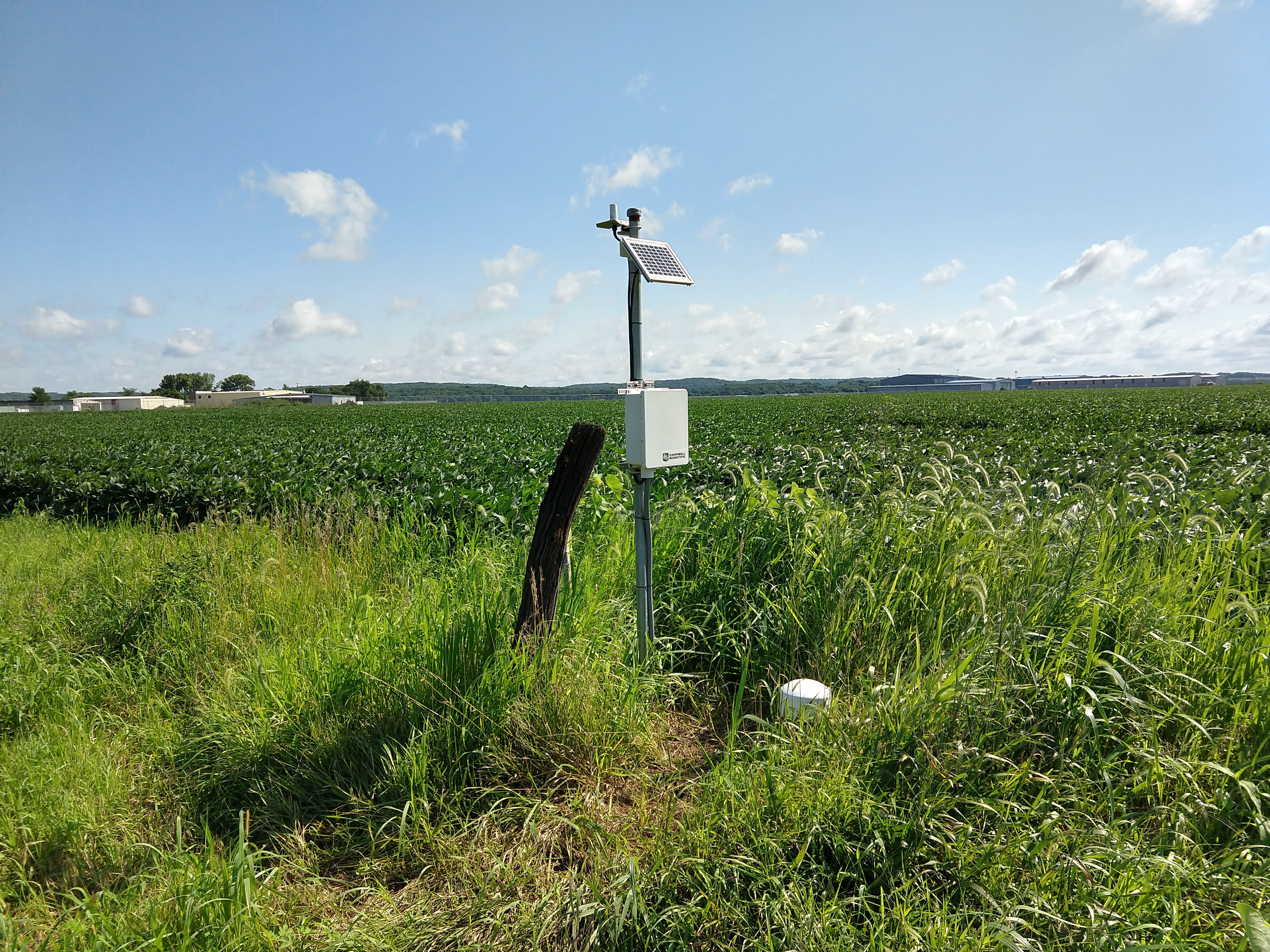
News Release, Kansas Geological Survey, June 23, 2022
LAWRENCE — A new project based at the Kansas Geological Survey at the University of Kansas aims to help rural communities on the eastern Great Plains, including in eastern Kansas, manage agricultural and water resources today and prepare for potential risks posed by a changing climate in the future.
The four-year project, Sustainable Adaptations to the Future Environment of Kansas's Agriculture and Water (SAFE KAW), is a collaboration between researchers at the KGS and Kansas State University. It will aim to identify ways to protect water resources while maintaining rural livelihoods in an area where warming temperatures and unpredictable precipitation mean farmers and other interested parties may soon be faced with tough decisions to balance agricultural water needs with other considerations.
The study will take place in the Kansas River basin, from its beginning at the confluence of the Smoky Hill and Republican rivers at Junction City to its end in Kansas City, Kansas, where the Kansas River (also known as the Kaw) merges into the Missouri River.
"The Kansas River corridor will be an important growth area and economic engine for Kansas in the 21st century, but the current landscape was largely developed over the 19th and 20th centuries," said Sam Zipper, project director and assistant scientist at the KGS.

The study area sits on the eastern edge of a symbolic line that divides the arid western United States from the humid east. Once established at the 100th meridian, which passes through Kansas from Norton County on the north to Clark County on the south, this line shifted steadily eastward throughout the 20th century. Nicknamed the "new 100th meridian," the dividing line between arid and humid regions is projected to cross the Kansas River basin over the next 80 years.
As the line shifts, some studies predict that average temperatures across the region will increase by the end of the 21st century, raising concerns about repercussions for crop productivity, water use, and water quality. Potential precipitation changes are more unpredictable.
"In conversations with water managers, the agricultural community, and environmental groups in the Kansas River region, a common concern we heard was that people wanted to make sure they were proactive about addressing and avoiding the many water-related challenges that western Kansas has experienced," Zipper said.
In western Kansas, groundwater levels in much of the state's portion of the High Plains aquifer, especially in southwest Kansas, have been on the decline since water use started to rise in the mid-20th century. Dry years lead to increased water usage, primarily for irrigation, which in turn typically causes greater declines in water levels. In southwest Kansas, average water levels have declined more than 35 feet since 1996.
"Although it is not likely that eastern Kansas will dry up to the level of far western Kansas any time soon, projected climate change is likely to lead to drier conditions," Zipper said.
Drier conditions, even when not as severe as those experienced in the western part of the state, pose considerable risk as communities adopt new strategies related to water use.

"Adaptations and changes in agricultural practices may have cascading impacts on water quality in the Kansas River, which is a crucial source of drinking water," said Erin Seybold, co-project director and assistant scientist at the KGS. "These cascading impacts could have beneficial or detrimental impacts of water quality, depending on how farmers adapt and how the system responds to a changing climate. Our research will identify what combination of actions can promote positive, resilient outcomes."
"By working on this problem now, we hope to identify win-win strategies that create resilient communities while protecting water resources and positioning the region to thrive in the 21st century," Zipper said. "To put it in more concrete terms, how much more will farmers need to irrigate and how will this impact streamflow and groundwater resources? How could changes in agriculture and climate affect water quality in the region? What agricultural management strategies can help sustain rural communities while protecting water resources?"
Zipper, Seybold, and their colleagues at Kansas State University - Vaishali Sharda, Department of Biological and Agricultural Engineering, and Katherine Nelson, Department of Geography and Geospatial Sciences - will develop models based on environmental and social data to help answer those questions. The project will focus on the complex interactions among agricultural, environmental, social, and economic factors. The researchers will work with an advisory group that includes representatives from each of these sectors, including the Kansas Water Office, Kansas Department of Health and Environment, the KSU Research and Extension, The Nature Conservancy, and Friends of the Kaw.
"Agriculture is of prime importance to communities along the Kansas River and deeply intertwined with local ecosystems," said Nelson, co-project director. "Without balance across community, agricultural, and ecosystem needs, none of these things can thrive. The future of communities and ecosystems in the Kansas River basin is dependent on how people respond and adapt to changing environmental conditions."
SAFE KAW will be funded by a $750,000 grant from the U.S. Department of Agriculture. The study area encompasses all or parts of Atchison, Brown, Douglas, Geary, Jackson, Jefferson, Johnson, Leavenworth, Marshall, Morris, Nemaha, Osage, Pottawatomie, Riley, Shawnee, Wabaunsee, and Wyandotte counties. Although the project will focus on the Kansas River basin, what researchers learn will be relevant to agricultural communities along the eastern edge of the Great Plains from South Dakota to central Texas.
The Kansas Geological Survey is a non-regulatory research and service division of the University of Kansas. KGS researchers study and provide information about the state's geologic resources
Story by Julie Tollefson, jtollefson@ku.edu For more information, contact Sam Zipper, samzipper@ku.edu, (785) 864-0364
Kansas Geological Survey, Public Outreach